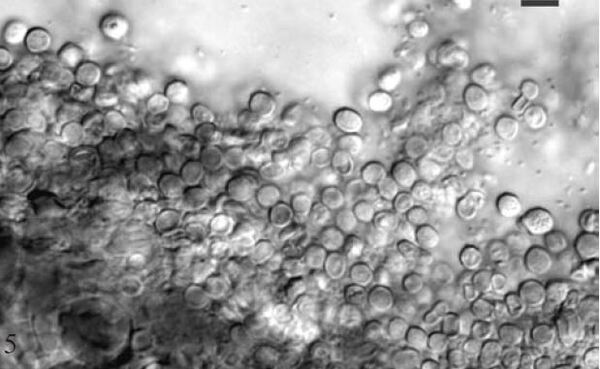Cheiromycina globosa Aptroot & Schiefelb.
Mycol. Res., 107, 1: 105, 2003
Synonyms:
Distribution:
Description: Thallus crustose, thinly episubstratic, ecorticate, pale grey, spreading, without a distinct prothallus, somehow resembling the thallus of Lepra albescens. Conidiomata sporodochial, superficial, orbicular, white, excavate to finally flat, 0.2-0.5 mm across, the tissue hyaline, cellular throughout, the cells with 2-4 µm wide lumina. Conidiophores not evident. Conidia globose to slightly ellipsoid, 1-celled, hyaline, smooth, the wall relatively thick (c. 0.5 µm), 4-5.5 mm wide (it is not clear whether they are homologous to the detaching globose cells commonly interpreted as conidiogenous cells in the type species). Photobiont chlorococcoid, the cells 5-15 µm wide. Spot tests: thallus K-, C-, KC-, P-, UV-. Chemistry: without lichen substances.Note: a recently-described species growing on isolated trees with base-rich or -enriched bark in Xanthorion-communities. It differs considerably from other congeneric species in conidiogenesis, the form of conidia, and the ecology, and according to Muggia & al. (2017), it likely does not belong to Cheiromycina s.str. It is known from Central Europe, but it could be present also in Italy, and should be looked for there.
Growth form: Crustose
Substrata: bark
Photobiont: green algae other than Trentepohlia
Reproductive strategy: mainly asexual, by conidia and thalloconidia

Predictive model
Growth form: Crustose
Substrata: bark
Photobiont: green algae other than Trentepohlia
Reproductive strategy: mainly asexual, by conidia and thalloconidia

Predictive model
 Index Fungorum
Index Fungorum
 GBIF
GBIF


